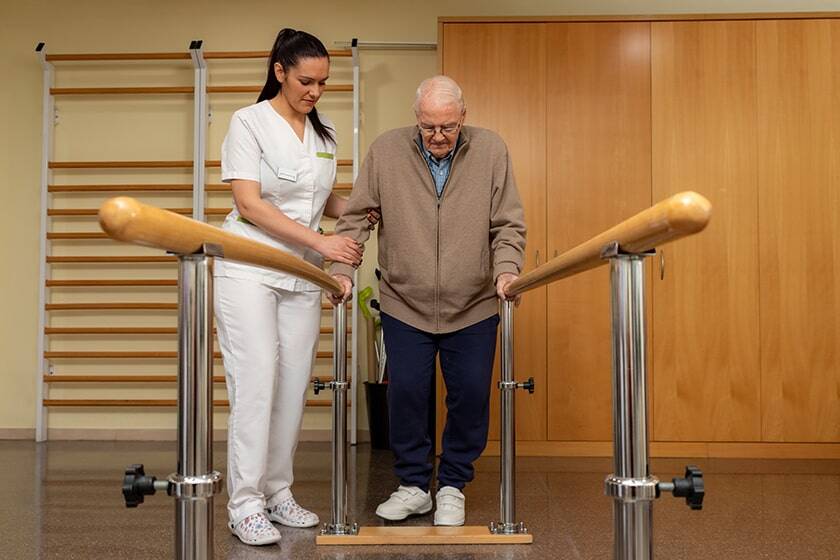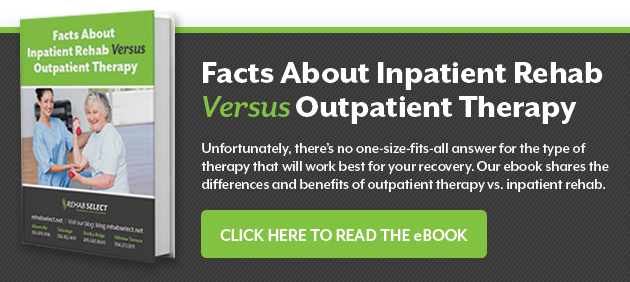
The average stroke recovery takes anywhere from 3-4 months to 1-2 years, and sometimes recovery efforts can last a lifetime. Early intervention is critical for the best results, and rehab often starts within a day or two of hospitalization.
Once your condition is stable, the next step is to regain function and prevent further complications. An inpatient care facility is usually the best place to receive the type of high-level care necessary during your best recovery window.
If your doctor recommends an inpatient stroke rehabilitation program, you and your loved ones will be faced with many choices about where to receive this type of rehab. One great place to start your inquiry is to see what’s covered by your insurance and what’s nearby. Then, you can narrow your choices by researching and visiting a few of your favorite facilities.
To help you assess your options, the American Stroke Association offers a list of helpful questions to ask the stroke care facility.
Let’s take a closer look at the most pertinent criteria to look for in a stroke rehabilitation program.
1: Expertise
Any inpatient rehab facility may offer generalized care after a stroke, but some facilities actually specialize in post-stroke rehabilitation. Ideally, the care facility you choose should have specific expertise in stroke care.
Stroke care specialists have more detailed knowledge about stroke-specific treatments and techniques, which benefits your recovery. It’s important to ask about the certifications and accreditation of the facility and the credentials and experience of the providers to ensure they can provide the exact expertise you need.
2: Intensity of Treatment
The right treatment intensity is an important factor in your recovery. You don’t want a treatment plan that’s too grueling or too easy, so it’s important that treatment aligns with your current abilities and goals.
According to the American Academy of Physical Medicine and Rehabilitation (AAPMR) early, rigorous treatment leads to significant recovery gains. Your providers should dedicate a minimum of 3 hours per day, 5 days a week, to rehabilitation therapy for an average of 2 weeks.
During that time, your care facility should track the rate at which you recover your functional abilities, most commonly with a Functional Independence Measure Score (FIMS). Your providers should track your mobility and communication skills to ensure you continue to improve every day.
3: Multidisciplinary Team
In order to optimize your time in rehab, your inpatient facility should offer a comprehensive, multidisciplinary team of experts skilled in stroke care. Their collective skills and expertise target all the problems a stroke can cause with numerous approaches so you can make a stronger recovery.
Your care facility should give you access to the types of post-stroke rehab specialists you need, including:
- Rehab nurses
- Physical therapists
- Occupational therapists
- Recreational therapists
- Speech-language pathologists
- Doctors: primary care providers, physiatrists, neurologists, surgeons, etc.
- Psychologists
- Social workers
- Dietitians
Typically, a physician checks in on you daily, including a physiatrist at least 3 times per week. Physical, occupational, and speech-language therapy should occupy the largest portion of your weekdays, and you may have appointments with other providers as necessary. This type of attention also gives you or your loved one access to a high level of medical supervision, which is critical after a stroke.
4: Multifaceted Treatment
With the help of your multidisciplinary team, you should have access to a multitude of treatment modalities, personalized for your situation. Strokes can cause a variety of disabilities including language complications, thinking and memory problems, paralysis, loss of feeling, pain, and mood and personality changes. Your care team designs your treatment program to target each specific deficit.
Some of the treatment modalities used for post-stroke rehabilitation include:
- Motor skills training
- Range-of-motion and mobility therapy
- Constraint-induced therapy
- Functional electrical stimulation
- Noninvasive brain stimulation
- Robotic, wireless, or virtual reality therapy
- Cognitive therapy
- Counseling
- Speech therapy
- Biologic therapy
Learn about what kinds of evidence-based programs your facility has in place to address the effects of stroke. A comprehensive treatment approach enhances your chance for a positive outcome.
5: Proven Track Record
It’s important to gauge a rehab facility’s effectiveness by asking for some details about their numbers. You may be able to tell if one treatment center might suit you better than another by inquiring about the number of stroke patients they treat successfully.
You can also examine testimonials and patient reviews online to get a sense of the facility’s rankings and results. All of this information provides clues about the facility’s effectiveness.
6: Personal Comfort
Another important guideline to help with your decision is you or your loved one’s personal level of comfort at a facility. When you visit, you might want to explore more about the facility’s accommodations and consider things like:
- How the staff treat the residents and visitors
- Amenities available
- Visitor and pet policies
- Precautionary safety measures
- Food plans
- Activity schedules
Though more subjective, the feelings you have about a facility can make a significant difference in your decision.
7: Transition of Care
The transition from the hospital to the rehab center and from the rehab center to home each require specific considerations. If not handled correctly, transitions of care can lead to confusion, missed appointments, missed opportunities, insurance fiascoes, and other problems.
A smooth, organized, patient-centered transition makes it easier on you and your caretakers, so you may want to consider what role your rehab center plays in each location change. It’s important to ask your provider what type of transition programs they have in place.
For example, you can check to see if the facility has a post-rehab referral program, case management programs, and resources for family and caretakers to minimize the challenges of going home. Resources like home-based care, follow-up appointments, clear discharge instructions, and community programs help improve the transition.
As a premier stroke rehab center in Alabama, Rehab Select strives to exceed the criteria for post-stroke rehabilitation to optimize your recovery. They provide access to a highly specialized team, state-of-the-art equipment, and evidence-based stroke care. Call today or schedule a tour to make sure Rehab Select is right for you or your loved one.





